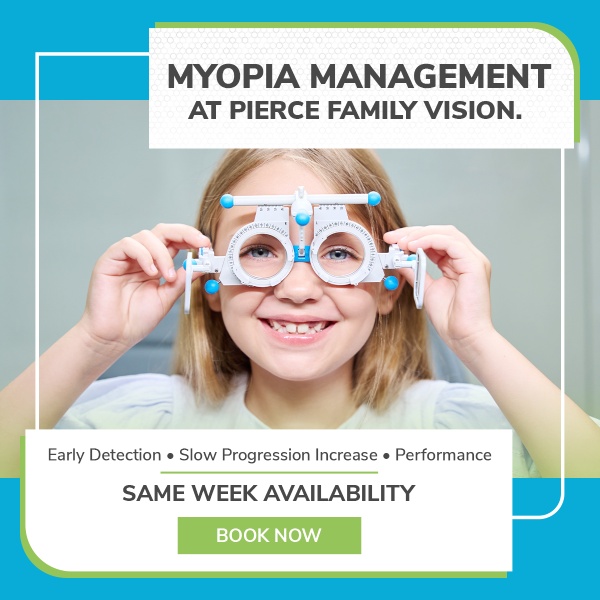If there is one thing I can suggest to patients that could truly improve their lives it is good computer glasses (the others being prescription sunglasses and good “Eyegiene“). I often have patients tell me how much they LOVE their computer glasses and that they wish they had them sooner.
First of all, what are computer glasses? Computer glasses normally have a different prescription from your usual glasses (in either a single vision or progressive design) which maximizes the clarity and comfort of the wearer during long periods of near work (laptop, desktop, tablet, phone use and even book reading). They may or may not have a blue light filter- more on that later.
For a younger patient, computer glasses may be single vision or an anti-fatigue Eyezen type lens. They may be focused for the distance also, thus wearable away from the computer, or they may just be focused for near and have to be removed for the distance, depending on the needs of the patient.
Blue light filters are something I get asked about regularly. Blue light got a bad rap a few years ago and adverse ocular health effects have NOT been proven. We need a certain amount of blue light and it is a part of regular sunlight. But some patients find the glare from blue light bothersome, whether from computer screens or fluorescent lights or those terrible new car headlights! So some patients find a blue light filter more comfortable, some notice no difference at all, and some like photographers and graphic designers should NOT have their colour vision even slightly affected by blue light filters. So to each his own!
Now for patients of a certain age, presbyopia or the “over 40 near issue” (explained here elsewhere on my blog), the need for computer glasses becomes more obvious. Patients with naturally clear distance vision usually start out with single vision reading glasses. These get used for the computer eventually, with many patients realizing that older, lower prescription single vision reading glasses are still useful for computers which are placed further away, even if they may no longer be strong enough for the fine print.
For those of us with a distance prescription, we usually go with progressive lenses (or “no-lines”) which change focus progressively from the distance at the top to the near at the bottom, hence the name. These are usually fine for the computer distance at first when you are in your 40s however by age 50 and beyond, patients may find neck issues from lifting the progressive to see the fine print on the computer screen. NO! DON’T WRECK YOUR NECK!
This is where a pair of computer glasses can really improve your quality of life. Although it may not be as convenient to have two pairs of glasses, one for general use and one for desk/computer work, they almost always give clearer, more comfortable vision for ANY near work, including reading. Some patients can get away with the slightly less expensive single vision computer/near glasses if they truly only work at one distance, however I find computer progressives are much more useful and less frustrating as they give clear vision all the way from extended arm’s length right on in to the closer cell phone/medicine bottle distance. Computer progressives do not work for the distance, so for television, driving and shopping you have to take them off or switch to your general use glasses. But I find I can happily wander around the house with my computer progressives on as long as I don’t need to see too clearly in the distance.
So there you go. Are computer glasses right for you? This is a discussion for you and your optometrist at Pierce Family Vision, but hopefully this got you thinking about whether they might make sense for you and your particular visual demands. We just want our patients to be happy with clear, comfortable vision whenever possible.



